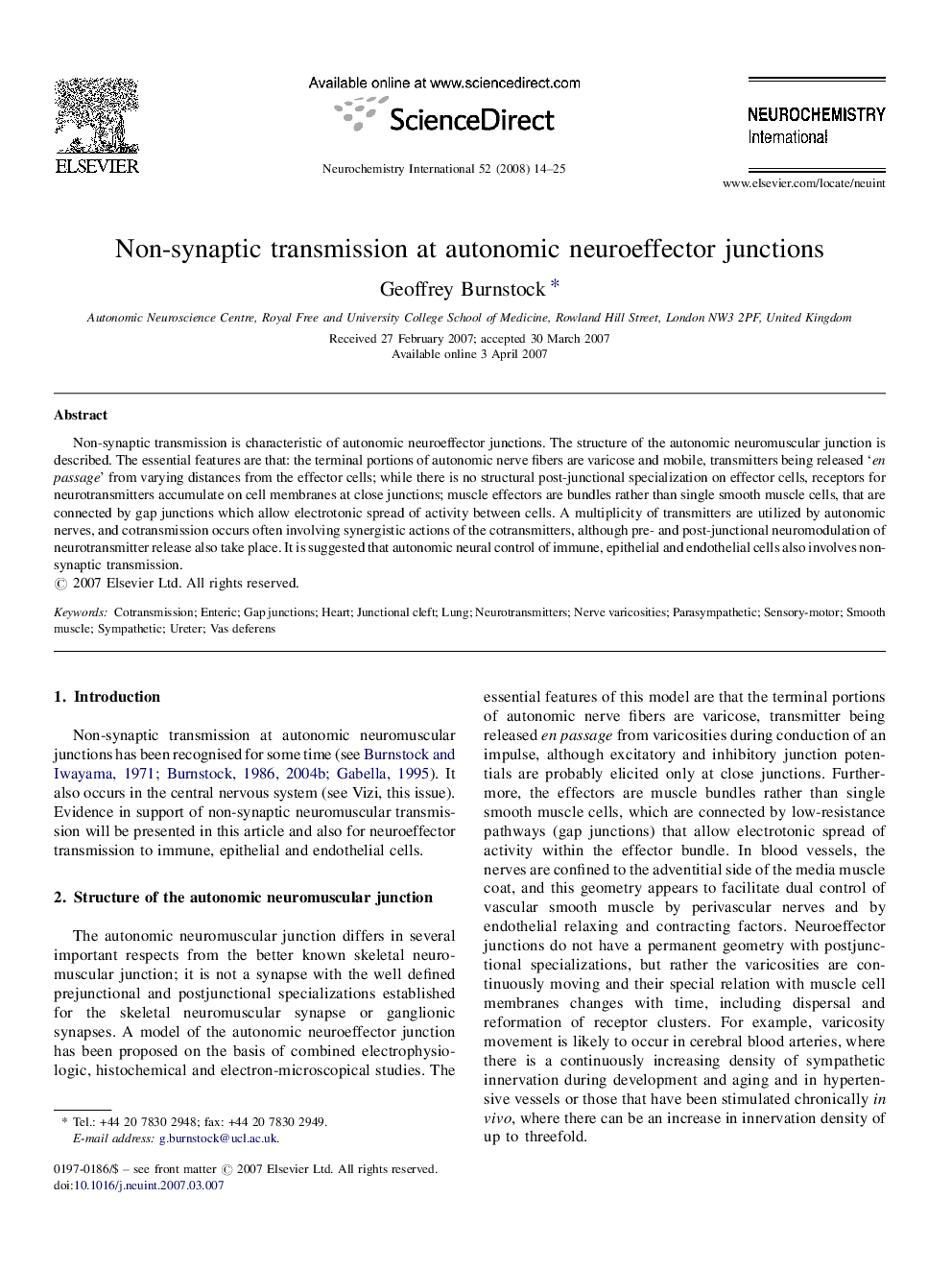| Article ID | Journal | Published Year | Pages | File Type |
|---|---|---|---|---|
| 8479354 | Neurochemistry International | 2008 | 12 Pages |
Abstract
Non-synaptic transmission is characteristic of autonomic neuroeffector junctions. The structure of the autonomic neuromuscular junction is described. The essential features are that: the terminal portions of autonomic nerve fibers are varicose and mobile, transmitters being released 'en passage' from varying distances from the effector cells; while there is no structural post-junctional specialization on effector cells, receptors for neurotransmitters accumulate on cell membranes at close junctions; muscle effectors are bundles rather than single smooth muscle cells, that are connected by gap junctions which allow electrotonic spread of activity between cells. A multiplicity of transmitters are utilized by autonomic nerves, and cotransmission occurs often involving synergistic actions of the cotransmitters, although pre- and post-junctional neuromodulation of neurotransmitter release also take place. It is suggested that autonomic neural control of immune, epithelial and endothelial cells also involves non-synaptic transmission.
Keywords
Related Topics
Life Sciences
Biochemistry, Genetics and Molecular Biology
Cell Biology
Authors
Geoffrey Burnstock,
